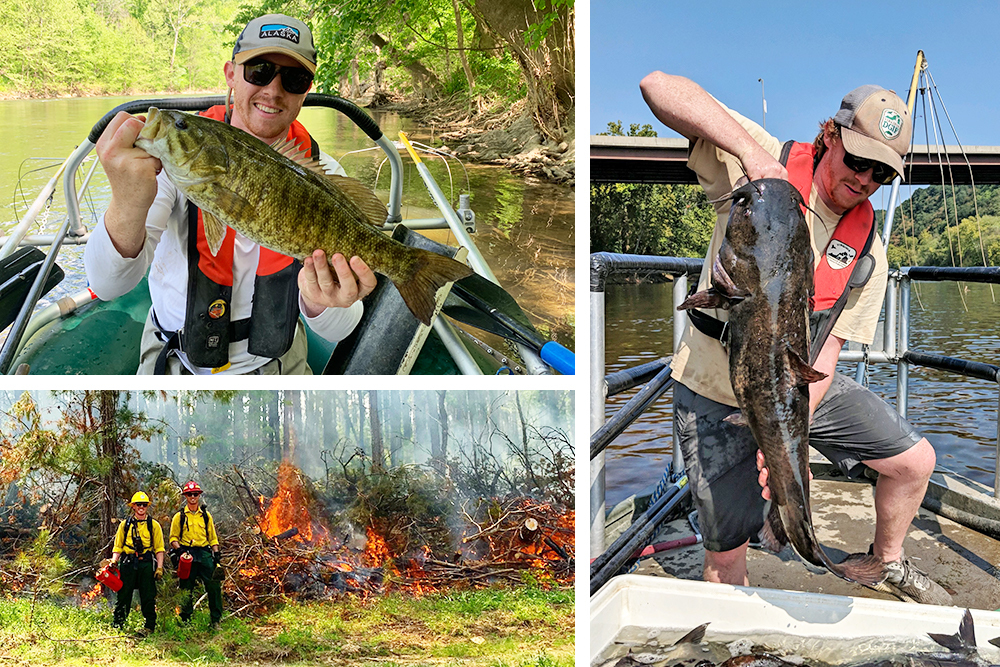Braden Herman ‘18 was planning to go to med school, but then he fell into addiction – with fly fishing. He’d grown up pole fishing around Fort Defiance, Virginia, but a mentor got him into fly fishing in college.
“It was game over,” Herman says, laughing. He became a “trout bum … it turns into less of a hobby and more into an obsession.”
But Herman doesn’t just fish on his days off. His passion for the outdoors and conservation led him to an internship with the Department of Game and Inland Fisheries, and ultimately, graduate studies in natural resources and fisheries biology at Humboldt State University in Arcata, California.
The school’s nickname? “Salmon University.”
In this sparsely populated region of northern California, historically renowned for gorgeous watersheds teeming with salmonids, “the amount of access to natural resources is pretty unparalleled,” Herman says.
Before in-person classes were suspended this spring, Herman would spend his days tromping around watershed tributaries – sometimes driving right up to a site, other times hiking 10 miles to access a small stream. His thesis is a collaborative project on evaluating environmental DNA in regards to Coho salmon.
A few definitions are in order. As Herman explains, whenever a fish or animal comes into contact with the world, they leave a physical trace called environmental DNA. It’s a newer concept in the world of wildlife management, so Herman’s project has to do with finding ways of analyzing environmental DNA to determine things like species abundance and mapping. If he and his research partners succeed in establishing reliable analysis methods, their work could be applied to aquatic management all over the country.
That was part of the attraction to the project. Herman says he “wanted to be on the forefront of this new tool.”
Before starting grad school, Herman worked as a fisheries technician for the Department of Game and Inland Fisheries based in Verona. Compared to studying environmental DNA, they’d use more “invasive” techniques for monitoring the health of fish populations, like electrofishing – a common management method of temporarily stunning the fish so they can be collected and examined, then released. He studied native brook trout, muskellunge, catfish, and bass around the Shenandoah Valley.
Part of this work was to determine how climate change or yearly rainfall affected different species. Another part was to be able to communicate about the fish populations to recreational anglers, like “bass – how are they doing? Are there big fish in this lake?”
Herman says he enjoys both the science and the human interaction sides of fisheries research. He looks up to fisheries biologists as “the people on the front lines keeping our world clean and conserved.”
A word of parting advice from Herman to any fellow salmonid enthusiasts out there?
“If you’ve never been to the northern coast of California, you should definitely come.”
